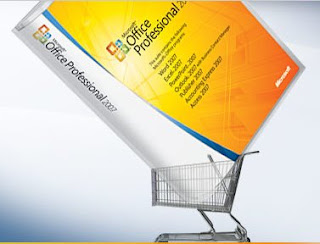Introducing the new interface
In Office PowerPoint 2007, the new Office Fluent user interface replaces menus, toolbars, and most of the task panes from previous versions of PowerPoint with a single mechanism that is simple and discoverable. The new user interface is designed to help you be more productive in PowerPoint, more easily find the right features for various tasks, discover new functionality, and be more efficient.
This article is designed for experienced PowerPoint 2003 users — Help desk personnel, IT professionals, and others who are already familiar with the PowerPoint 2003 interface — who want to find familiar commands quickly in Office PowerPoint 2007.
Office Fluent user interface
The primary replacement for menus and toolbars in Office PowerPoint 2007 is the Ribbon, which is a part of the Office Fluent user interface. Designed for easy browsing, the Ribbon consists of tabs that are organized around specific scenarios or objects. The controls on each tab are further organized into several groups. The Ribbon can host richer content than menus and toolbars can, including buttons, galleries, and dialog box content.

- Tabs are designed to be task-oriented.
- Groups within each tab break a task into subtasks.
- Command buttons in each group carry out a command or display a menu of commands.
Tabs that appear only when you need them
In addition to the standard set of tabs that you see on the Ribbon whenever you start Office PowerPoint 2007, there are two other kinds of tabs, which appear in the interface only when they are useful for the type of task you are currently performing.
- Contextual tools Contextual tools enable you to work with an object that you select on the page, such as a table, picture, or drawing. When you click the object, the pertinent set of contextual tabs appear in an accent color next to the standard tabs.
 Select an object in your presentation.
Select an object in your presentation. - The name of the applicable contextual tools appears in an accent color, and the contextual tabs appear next to the standard set of tabs.
- The contextual tabs provide controls for working with the selected item.
- A standard tab on the Ribbon.
Program tabs Program tabs replace the standard set of tabs when you switch to certain authoring modes or views, including Slide Master, Handout Master, Notes Master, and, in this example, Print Preview.
Program tabs Program tabs replace the standard set of tabs when you switch to certain authoring modes or views, including Slide Master, Handout Master, Notes Master, and, in this example, Print Preview.
Menus, toolbars, and other familiar elements

Menus, toolbars, and other familiar elements
In addition to tabs, groups, and commands, Office PowerPoint 2007 uses other elements that also provide paths for accomplishing your tasks. The following elements are more like the menus and toolbars that you are already familiar with from previous versions of PowerPoint. The tables at the end of this article direct you to these elements in the Path column.
Microsoft Office Button This button is located at the upper-left corner of the PowerPoint window and opens the menu shown here.
This button is located at the upper-left corner of the PowerPoint window and opens the menu shown here.
Microsoft Office Button
 This button is located at the upper-left corner of the PowerPoint window and opens the menu shown here.
This button is located at the upper-left corner of the PowerPoint window and opens the menu shown here.
Quick Access Toolbar The Quick Access Toolbar is located by default at the top of the PowerPoint window and provides quick access to tools that you use frequently. You can customize the Quick Access Toolbar by adding commands to it.

Dialog Box Launchers Dialog Box Launchers are small icons that appear in some groups. Clicking a Dialog Box Launcher opens a related dialog box or task pane, providing more options related to that group.


Dialog Box Launchers Dialog Box Launchers are small icons that appear in some groups. Clicking a Dialog Box Launcher opens a related dialog box or task pane, providing more options related to that group.

Adding commands to the Quick Access Toolbar
As indicated in the tables at the end of this article, some PowerPoint 2003 commands are available in Office PowerPoint 2007 only from the list of all commands in the PowerPoint Options dialog box. To use these commands in Office PowerPoint 2007, you first add them to the Quick Access Toolbar as follows:- Click the Microsoft Office Button
 ,and then click PowerPoint Options.
,and then click PowerPoint Options. - In the list at the left, click Customize.

- In the Choose commands from drop-down list box, click All Commands.
- In the Customize Quick Access Toolbar box, select either For all documents (default) or a specific document.
- Click the command that you want to add, and then click Add.
- Repeat for each command that you want to add.
- Click the Move Up and Move Down arrow buttons to arrange the commands in the order in which you want them to appear on the Quick Access Toolbar.
- Click OK






